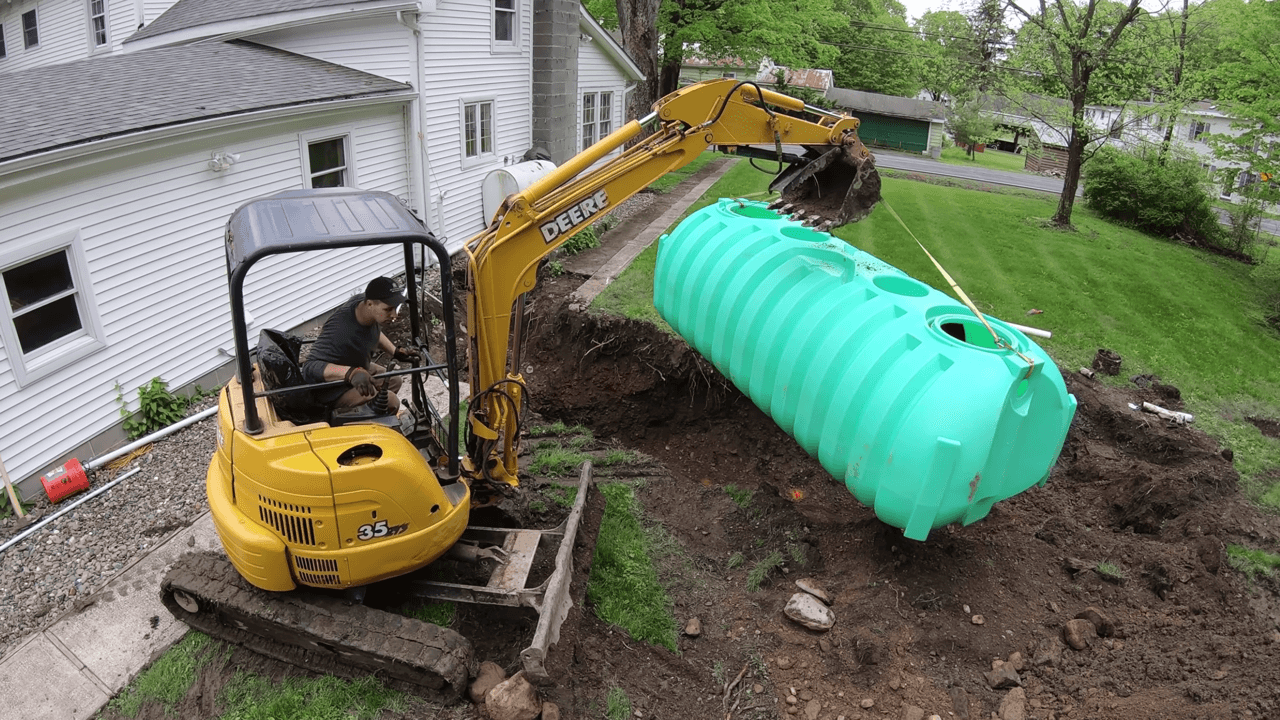We can do it all.
Septic System Replacement & Installation in Irvine
We'll get you right as rain.
Is there a septic system in your near future? Or have you been experiencing some major issues with your septic tank and you're thinking it may need to be replaced?
Well, you've come to the right place.
No matter what your needs for your property are, we are your one stop shop for anything involving septic systems.
If you've been looking for the best septic tank service in Irvine, you can stop now...you've found us.
We are here for all of your septic system needs.
Call us today at (949) 771-0970.
Costs of Septic Tank Installation
We want our customers to be aware of the costs and considerations of a septic tank installation service well in advance. Often times, there's more than just the tank itself that they'll be paying for. Some things to take into account are:
Soil Testing
Before installing a septic tank, it must first be determined whether or not the ground in that area is able to accomodate the system in a way that satisfies any local health department requirements or regulations. In the soil testing process, engineers will drill a hole to test the soil permeability as well as the layers of sediment.
Landscape Preparation
Once the proper location for the septic system is pinpointed, landscaping can be cleared in preparation for the installation. Homeowners can opt to do it themselves, or we can arrange that for you.
Inspection & Acquisition of Permits
This comes after the soil testing phase. If the soil is cleared and the appropriate septic system has been chosen, local permits can be obtained. Costs associated with this step will depend on your local city and health regulations.
Labor
The cost of labor will depend on the type of service being performed. Included in our labor costs are the materials and our insurance. (Note: you always want to work with a septic system service that has insurance. Not only does it protect us, but it protects you as well!)
When to Replace Components of Your Septic System
Needing parts of your septic system replaced isn't necessarily a bad thing. It's a mechanical system, and most mechanical systems will need repairs and/or replacements at some point in time, even with the best regular maintenance. There are some parts of a septic system that very commonly need to be replaced.
Septic Tank Pump Replacement
Septic tank pumps are extremely important for the functionality of any systems that require them. They are what push the effluent from the tank to the drain field. Replacing a faulty pump will help the system function properly in the future.
Septic Tank Filter Replacement
This is by far the most common complication that homeowners run into. And the good news is, it's one of the lower cost issues for us to fix. If, upon analyzing the condition of your septic system, we find that a rank filter replacement is the best course of action, the average cost of having the new filter installed tends to be less than $500.
Septic Drain Field Replacement
These need to be replaced if the septic tank leach or drain field becomes oversaturated. When this occurs, sewage typically backs up into the house, and we don't need to tell you what a major problem that is. If the existing drain field needs to be dug out and replaced with a new one, the typical cost is usually around $7,000.
Baffle Replacement
Baffles help to protect inlets and pipes by preventing scum from clogging them up. However, it's not abnormal for them to fail or become clogged themselves. Rather than replacing the entire tank, you can opt to have them replaced. But you'll be happy to know that replacing septic tank baffles is rarely a service that costs more than a $500 or so.
Tank Lid Replacement
This is one of the easiest repairs we can do! If a tank lid breaks or rusts, the cost to replace it can be as low as $30. Concrete lids are trickier and require special equipment to remove and install new ones. Since those are more complicated, they will be more expensive, even before labor costs are factored in.
Call to hire the septic tank repair pros
| (949) 771-0970
FAQ About Septic Tank Installation & Replacement in Irvine
- How much does a septic tank system cost?
Depending on a number of factors, you can expect a range of $2,000-$9,000 for a septic tank at a typical residence. The averge cost of installing a new septic tank system is about $5,000. This includes the cost of the septic tank itself as well as the labor. Depending on the type of septic tank, the price could be higher, but we're just talking conventional septic tanks here.
- What size septic tank do I need for my home?
This will be determined by the size of your home and the number of bedrooms. We will take all of this into consideration when determining how much water flows through your home on a daily basis. For a two bedroom home, you'll need a septic tank with a minimum capacity of 750-1,000 gallons, depending on municipality requirements. For a three-bedroom home, you'll need a 1,000 gallon septic tank. A three bedroom home will require a minimum 1,250 gallon water tank.
- How do I know if I need to replace my septic tank?
We would be more than happy to help you determine whether or not your septic tank just needs a repair, or if it should be replaced completely. Some problems that seem big can be as simple as rebuilding the population of bacteria in your septic tank (and we'll tell you exactly how to do that.) Our goal will always be to repair, if possible, since that is always the more cost-effective option. But if we cannot do so safely, we will recommend a replacement. But we'll be unable to determine this without coming out to take a look.
Types of Septic Systems
We totally get why someone would think that all septic systems are pretty much the same.
However, it is important to know the differences, as it will have an impact on the overall cost of a septic tank installation or replacement.
Here's a quick rundown of the different types of septic tank systems:
Anaerobic Septic System
Anaerobic septic systems don't require additional power or chemicals. This system contains bacteria that survive without oxygen, that break down solid waste. Any liquid waste is then piped out and distributed under the soil. Anaerobic systems are fairly low-maintenance, making them a popular choice for homeowners.
Aerobic Septic System
Aerobic septic systems, on the other hand, contain bacteria that do need oxygen to survive. This type of system requires oxygen to be pumped into the septic tank, which activates the bacteria, "waking them up," so that they can feed on the solid waste within the tank. These systems are great options for homes that sit near bodies of water.
Mound Septic System
Some homes have groundwater that sits fairly close to the surface. In these situations a sand mound needs to be constructed on the septic system area, which pumps wastewater from the tank to the mound a little bit at a time. This way, the sand can filter the water before it gets into the soil and groundwater. There are two main drawbacks to this type of septic system, though: they're expensive, and they require lots of space.
Gravity Septic System
Gravity septic systems don't need a water pump to function, but utilize the power of gravity instead. To work best, they need to be installed on a gentle slope.
Conventional Septic System
These are a fan favorite. They consist of a septic tank and a trench that acts as a drain field. The trench--which is constructed either on stone or gravel--allows water to pass through. This type of septic system also requires a lot of space to operate properly.
Chamber Septic System
The construction of a chamber system is much like a conventional septic system. However, instead of gravel in the drain field, plastic chambers are used. In comparison to a conventional system, though, they are easier to construct. And those who are especially environmentally conscious tend to like the fact that they have a smaller carbon footprint compared to other septic systems.
Orange County Clarifier Services
Irvine's #1 Clarifier System Repair & Maintenance Service
We're available
- Mon - Fri
- -
- Sat - Sun
- Closed
Services
Service Areas
The city of Irvine's leading experts in septic system repair services.
137 Pathway Unit F
Irvine, CA 92618
We're available
- Mon - Fri
- -
- Sat - Sun
- Closed
The city of Irvine's leading experts in septic system repair services.
137 Pathway Unit F
Irvine, CA 92618
We are a third party referral company. All referrals are forwarded to a licensed, professional septic service provider in Southern California.


